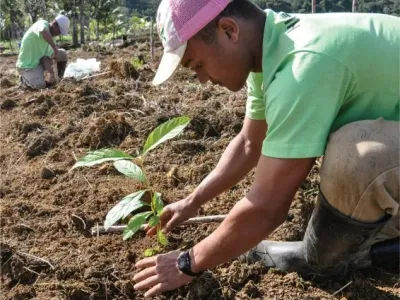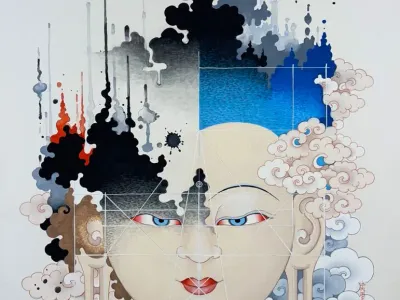The Jonang Doctrine
A Brief History of the Jonang Lineage
The Jonang lineage traces its roots back to the profound teachings of Buddha Shakyamuni, who turned the wheel of Dharma three times to cater to the varying dispositions of his disciples. Each turning of the wheel conveyed essential aspects of the Dharma:
- The First Turning: Focused on the Four Noble Truths.
- The Second Turning: Emphasized the absence of inherent characteristics.
- The Third Turning: Introduced clear discrimination.
The Jonangpas, the lineage holders of the ultimate definitive meaning of Madhyamika, emerged from this last Dharma Wheel and spread into Tibet. Madhyamika is one of the three principal traditions in Tibet, alongside the Great Perfection and Mahamudra, encompassing the concepts of Selflessness and Other-emptiness. The great Madhyamika reveals the nature of phenomena, showing that both subject and object do not inherently exist, leading to an understanding of the non-dual nature of reality.
The Madhyamika Lineage
The lineage of the Great Other-Empty Madhyamika (Uma Shandong Chenmo) originated from the teachings of the fully enlightened Buddha, passed down through a lineage of esteemed masters:
- Lord Maitreya
- Arya Nagarjuna
- Arya Asanga and his brother
- Mahasidha Shavaripa
- Maitriopa
- Ghawadra, among others.
These masters illuminated the Great Other-Empty Madhyamika in India, leading to the translation of these teachings into Tibetan by key translators and scholars. Notable figures include:
- Gzi Lotsawa Gawe Dorje
- Tsanrig Kawoche Drimed Shereb
- Latodpa Tarma Tsondu
- Tolpa Nyan Yeshi Chungnay
This unbroken lineage ultimately reached Kunchen Tolpo, the Dharma King of the three realms, who played a vital role in the flourishing of the tradition in Tibet.
The Tantric Lineage
In the 15th lunar month after Buddha Shakyamuni's enlightenment, he imparted the Kalachakra Tantra teachings, surrounded by a gathering of divine beings. These teachings initially remained in Shambhala, where King Dawa Zangpo documented them and enabled many beings to achieve profound accomplishments.
The teachings later spread to India during the time of Rigden Gyalka, thanks to Tushabpa Chenpo, who brought them back, leading to the proliferation of the Kalachakra teachings in the land of Aryas.
The Spread of Teachings into Tibet
Kache Banchen Dawa Gonpo, a direct disciple of Nalantra, traveled to Tibet three times, imparting the Kalachakra empowerment and teachings, including the trilogy of Bodhisattva commentaries. His teachings were further disseminated by accomplished masters such as:
- Lama Lhaje Gonpa
- Lama Droton Namtsek
- Drupchen Yumo Mikyod Dorje
In 1243, Shang Kunbang Thuje Tsondu was born, who became a prominent figure in the lineage. He founded the monastery in Jonang of Jomo Nakman Gyalmo in 1294, leading the tradition known as Jordruk (the Six Practices) to be recognized as Jonang.
Chang Sem Gyalwa Yeshi and Khetsun Yonden Gyatso were key figures in this lineage, becoming known as the first three Lamas of Jonang. A pivotal figure, Kunchen Jonangpa Sherab Gyaltsen, was born in 1292 and became a renowned scholar and practitioner. His teachings, combining Sutra and Tantra, drew interest and debate among scholars, establishing a solid foundation for the Jonang tradition.
Uninterrupted Lineage
The lineage continued through esteemed masters, such as:
- Kshitigarbha Chokley Namgyal
- Nyaponpa Kunga Pal
- Drubchen Kunga Lodroe
- Jetsun Taranata, the manifestation of Shri Chakrasamvara.
From 1575 to 1634, Jetsun Taranata emerged as a significant figure in the lineage, recognized as the reincarnation of Jonang Jetsun Kunga Drolchok. He founded the Jonang Monastery, preserving and promoting teachings from various Tibetan traditions, impacting the spiritual landscape of Tibet, China, and Mongolia.
The lineage has continued unbroken, flourishing through the teachings of Kunga Rinchen Gyatso, Khedrup Lodroe Namgyal, Chalongpa Ngaawang Trinley, and eventually reaching our root teacher today, who embodies the three kinds of kindness: bestowing empowerment, imparting teachings, and granting pith instructions.
Thus, the Jonang tradition of the definitive meaning continues to spread and flourish around the world, enriching the spiritual lives of countless individuals.


